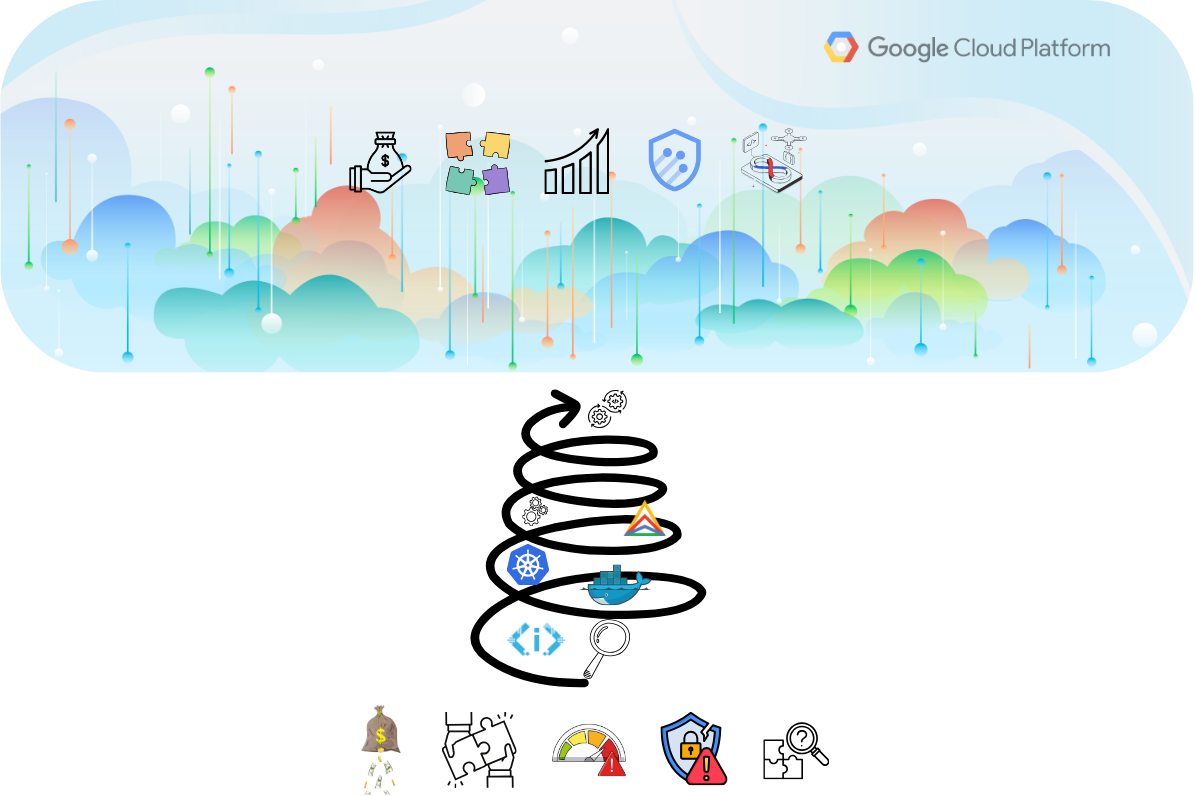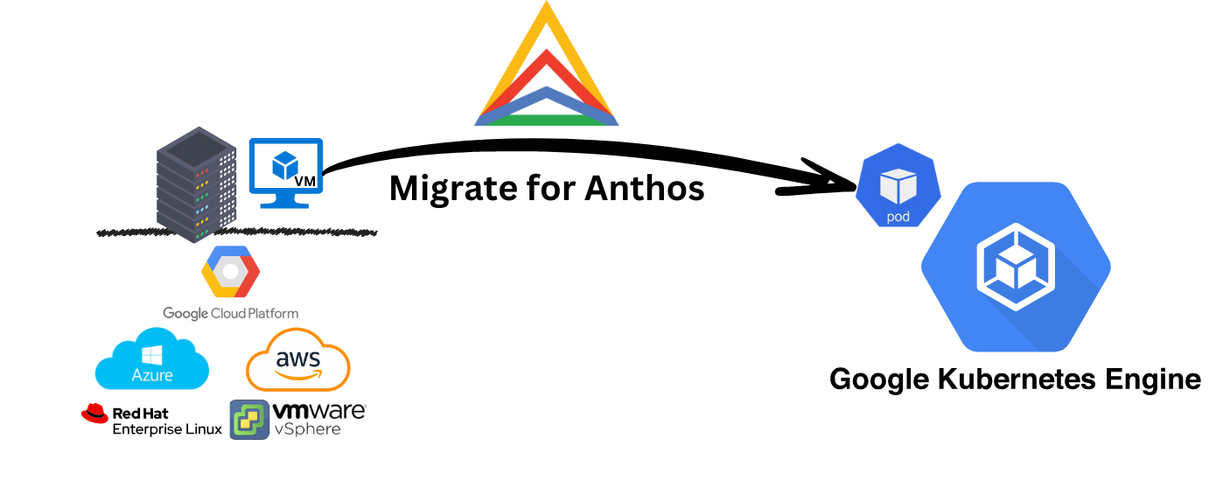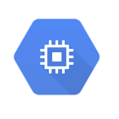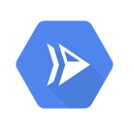From Legacy to High-Performance: Cloud Migration with Google Anthos

Summary
In an era where digital transformation and agility determine business success, many companies face outdated legacy applications. High maintenance costs, lack of scalability, and security risks hinder progress. Google Cloud offers the opportunity to modernize existing systems gradually and without radical new developments. This article highlights the benefits of cloud migration, proven migration strategies, and how modern platforms like Google Anthos facilitate the transition to a cloud-native, high-performance environment.
Why Migrate Legacy Applications to Google Cloud die Google Cloud migrieren
Legacy applications pose increasing challenges for companies:

- Rising maintenance costs for outdated hardware
- Difficulties integrating with modern systems
- Lack of scalability with growing demands
- Security risks due to unsupported components
- Loss of expertise when original developers leave the company
The Google Cloud Platform offers crucial advantages here: lower operating costs, greater scalability, improved security, and access to innovative cloud services. (See also Google Cloud Platform in E-Commerce Projekten about benefits we observe for e-commerce projects)
Established Migration Strategies
There are three proven approaches to migrating legacy applications to Google Cloud:
These three strategies are part of a broader spectrum that includes parts of the 7 Rs (Retire, Retain, Rehost, Relocate, Repurchase, Replatform, Refactor or Re-architect). The 7 Rs provide a comprehensive framework for evaluating and planning application migrations, recognized by leading cloud providers and analysts.
Choosing the right strategy depends on various factors: the state of the legacy application, business goals, time frame, budget, and long-term technological alignment. Often a hybrid approach is also useful, in which different parts of the application are treated differently.
What is Google Anthos
Google Anthos is a modern application platform specifically designed for hybrid and multi-cloud environments. It enables companies to consistently operate and manage applications across different infrastructures, whether they are running in Google Cloud, in other cloud environments, or in their own data center.
At its core, Anthos is based on Kubernetes, but extends it with numerous features. A central component is the Anthos Service Mesh, which is based on Istio , an open-source implementation for Service Mesh, and which Google has specifically optimized and extended for Anthos. This customized version offers improved security, observability, and traffic management, while being fully managed by Google, which significantly reduces operational overhead.
Core Components of Anthos
- Anthos Clusters: Managed Kubernetes clusters that can run in different environments
- Anthos Config Management: Centralized configuration management for all clusters
- Anthos Service Mesh: Management, observability, and security for microservices
- Cloud Run for Anthos: Serverless platform for containerized applications
- Migrate for Anthos: Tools for containerizing existing applications
Sidecar Proxy – The Heart of the Service Mesh
A particularly innovative element of Anthos Service Mesh is the sidecar proxy. This is automatically deployed alongside each application container and handles all network communication. The sidecar proxy functions like an intelligent assistant that:
- Intercepts and manages all incoming and outgoing network traffic
- Handles encryption and authentication of communication between services
- Collects detailed telemetry data without the application itself having to be instrumented
- Enforces traffic rules, such as load balancing, circuit breaking, and retries
The special thing: All this happens unknowingly for the application itself. The application code does not need to be changed, which makes the sidecar proxy particularly valuable for legacy applications whose source code may no longer be available or difficult to change.
With Anthos, IT teams can centrally manage applications while benefiting from modern DevOps methods. For the migration of legacy applications, Anthos offers a particular advantage: it enables a controlled, gradual transition to the cloud without having to abandon existing IT investments.
Modernization with Google Anthos: When Redevelopment is Not an Option
Google Anthos is particularly suitable when the application cannot be easily migrated to the cloud and redevelopment is not practical or feasible. This could be due to the following situations:
- The original developer has left the company
- The documentation is incomplete or outdated
- The application is business-critical and cannot be interrupted
- Specific domain knowledge has been lost over the years
- Time or budget constraints make redevelopment impossible
In such cases, Google Anthos offers a safe path to modernization that is particularly valuable when the original developer knowledge is no longer available.
With tools like Migrate for Anthos, legacy applications can usually be automatically packaged into containers. This includes all dependencies and configurations, so that the application can run in a Kubernetes environment without code changes.

Once the application is containerized, it can be deployed on an Anthos cluster. This would be the first step towards modernization without having to change the application code.
The Anthos Service Mesh now offers the migration team numerous options for migrating the application to the cloud. The most important are the following:
1. Observe and Understand
The Anthos Service Mesh provides valuable insights into the application
| Passive Monitoring | Envoy proxy-based sidecar containers are automatically injected via Kubernetes Admission Controller and intercept all network traffic |
| Automatic Traffic Visualization | Representation of how components communicate with each other, even if they are not documented anywhere |
| Identification of Hidden Dependencies | Discovery of unknown connections between application parts |
| Real-time Performance Analysis | Automatic collection of RED metrics (Rate, Error, Duration) for all service endpoints without instrumentation |
The Anthos Service Mesh provides valuable insights into the application
- Passive Monitoring: Envoy proxy-based sidecar containers are automatically injected via Kubernetes Admission Controller and intercept all network traffic
- Automatic Traffic Visualization: Representation of how components communicate with each other, even if they are not documented anywhere
- Identification of Hidden Dependencies: Discovery of unknown connections between application parts
- Real-time Performance Analysis: Automatic collection of RED metrics (Rate, Error, Duration) for all service endpoints without instrumentation

2. Parallel Operation and Gradual Migration
Anthos enables hybrid operation, which minimizes the risk during migration
| Multi-Cluster Management | Management of workloads across on-premises and cloud environments |
| Consistent Security Policies | Uniform security controls across all environments |
| Granular Traffic Control | Gradual redirection of users to the modernized version |
| Fast Rollback | In case of unexpected problems, traffic can be immediately redirected back to the original version |
Anthos enables hybrid operation, which minimizes the risk during migration
- Multi-Cluster Management: Management of workloads across on-premises and cloud environments
- Consistent Security Policies: Uniform security controls across all environments
- Granular Traffic Control: Gradual redirection of users to the modernized version
- Fast Rollback: In case of unexpected problems, traffic can be immediately redirected back to the original version

3. Modernisierung ohne Neuentwicklung
Once the legacy application is running in Anthos, a variety of modernization options open up, even without having to change the application code:
| Automatic Scaling | Anthos dynamically adjusts the number of application instances to meet demand, optimizing resource utilization and saving costs. |
| Zero-Downtime Updates | New versions of the application can be rolled out during operation without interruptions. |
| Improved Security | Anthos Service Mesh enables end-to-end encryption and authentication of communication between application components. Even if the source code did not take this into account during development. |
| Extended Monitoring | Through integration with Google Cloud Operations Suite, the IT team gains detailed insights into the application’s performance, utilization, and errors. |
| Connection of Modern Services | The legacy application can be gradually extended with modern cloud services such as BigQuery, Cloud AI, or Cloud Functions via APIs and messaging systems. |
Once the legacy application is running in Anthos, a variety of modernization options open up, even without having to change the application code:
- Automatic Scaling: Anthos dynamically adjusts the number of application instances to meet demand, optimizing resource utilization and saving costs.
- Zero-Downtime Updates: New versions of the application can be rolled out during operation without interruptions.
- Improved Security: Anthos Service Mesh enables end-to-end encryption and authentication of communication between application components. Even if the source code did not take this into account during development.
- Extended Monitoring: Through integration with Google Cloud Operations Suite, the IT team gains detailed insights into the application’s performance, utilization, and errors.
- Connection of Modern Services: The legacy application can be gradually extended with modern cloud services such as BigQuery, Cloud AI, or Cloud Functions via APIs and messaging systems.
Costs
For GKE Enterprise customers, the fees for the Service Mesh are already included in the total price – so there are no additional license costs. In addition, Google Cloud offers a flexible “pay as you go” model, where you only pay for the resources you actually use. This needs-based pricing makes modernization with Anthos an extremely cost-effective solution.
Conclusion
Migrating legacy applications to the cloud is a complex challenge that presents many companies with major hurdles. However, with Google Anthos, there is a platform that has been specifically developed for this purpose and enables a safe and gradual path to the cloud.
Through the combination of containerization, service mesh, and hybrid management, even complex applications can be modernized without redevelopment. This opens up completely new perspectives for the digital transformation of companies.
What can we do for YOU
Our drive is to ensure that you are equipped for the digital future, even with your existing applications. With the solutions of the Google Cloud Platform, we create the technical foundations for you.


